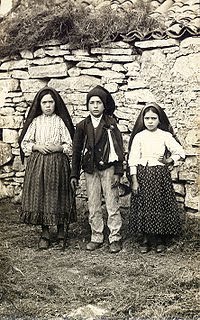Sunday, January 24, 2010
Jean Simmons Dies at 80
Jean Simmons, the English actress who made the covers of Time and Life magazines by the time she was 20 and became a major midcentury star alongside strong leading men like Laurence Olivier, Richard Burton and Marlon Brando, often playing their demure helpmates, died on Friday at her home in Santa Monica, Calif. She was 80.
The cause was lung cancer, according to Judy Page, her agent.
“Simmons is one of the most quietly commanding actresses Hollywood has ever trashed,” the critic Pauline Kael wrote when reviewing her performance as the half-genuine, half-fraudulent revivalist preacher who succumbs to Burt Lancaster’s con man in “Elmer Gantry” (1960). Indeed, she rarely found roles to match the talent so many colleagues and critics recognized in her, despite a dazzling start to her career.
Plucked out of a dancing-school class at 14, Ms. Simmons appeared in three classic movies before her 19th birthday, typically eliciting adjectives like “lovely,” “radiant” and “luminous” in the reviews.
She was Estella, the mocking girl who was raised to break men’s hearts, in David Lean’s “Great Expectations” (1946). She was the sensual native girl whom five Anglican nuns sought to civilize in a convent high in the Himalayas in “Black Narcissus” (1947). And after seeing “Great Expectations,” Olivier chose Ms. Simmons to play Ophelia to his title character in “Hamlet” (1948).
At the time, however, Ms. Simmons was under contract to the British producer J. Arthur Rank, so Olivier interviewed dozens of other actresses before he was able to pry Ms. Simmons loose for 30 days of shooting. Her performance brought her an Academy Award nomination for best supporting actress.
“I didn’t even know what an Oscar was at the time,” Ms. Simmons once said of her nomination. She would get only one other Academy Award nomination, for best actress, as the middle-aged housewife who runs away from her marriage in “The Happy Ending” (1969).
Ms. Simmons came to Hollywood in the early 1950s after her contract was sold to Howard Hughes, a practice not uncommon at the time.
Hughes, whose affairs with young actresses were notorious, wanted more of Ms. Simmons, then 22, than a celluloid image. And as one of the richest and most powerful men in Hollywood, he was accustomed to getting what he wanted, no matter that Ms. Simmons was newly married to the swashbuckling British actor Stewart Granger.
In his autobiography, “Sparks Fly Upward,” Mr. Granger described a telephone conversation in which Hughes propositioned Ms Simmons. After Mr. Granger heard Hughes say, “When are you going to get away from that goddamned husband of yours? I want to talk to you alone, honey,” he grabbed the phone and shouted, “Mr. Howard Bloody Hughes, you’ll be sorry if you don’t leave my wife alone!”
Hughes took his revenge by refusing to lend Ms. Simmons to the director William Wyler, who wanted her to star in “Roman Holiday,” the film that would bring Audrey Hepburn an Oscar and make her a star. And, according to the Granger memoir, when Ms. Simmons refused to sign a seven-year contract with RKO, the studio Hughes had bought in 1948, he threatened “to put her in three lousy productions that would ruin her career.”
One of those movies, “Angel Face” (1952), a film noir directed by Otto Preminger and co-starring Robert Mitchum, was actually well received, with Ms. Simmons playing one of the genre’s most beautiful killers.
“I had to do four pictures for Hughes, and then I was free, Ms. Simmons told the English newspaper The Guardian. “I never signed a contract with a studio after.”
In her first movie after her contract with Hughes ended — “Young Bess” (1953) at MGM — Ms. Simmons starred as the spirited and headstrong young woman who would become queen of England. “Young Bess” was the first of two American movies in which Ms. Simmons played opposite Mr. Granger. The other was “Footsteps in the Fog,” a 1955 thriller in which she played a maid who blackmails a man who has poisoned his wife.
In 1953, Ms. Simmons also played the determined title character in “The Actress,” an MGM film based on Ruth Gordon’s autobiographical play, “Years Ago.” Then she slipped quietly into supporting roles in the shadow of strong men.
She was the noble Roman who walked to her death with Richard Burton in “The Robe” (1953), although she did not share his new religion, Christianity. In “The Egyptian” (1954), set 13 centuries before Christ, she was the shy tavern maid who secretly loved the film’s hero, a physician. As “Desiree” (1954), she was mistress to Marlon Brando’s Napoleon, and eclipsed by Brando’s clowning. And no one was more decorous than strait-laced Sergeant Sarah Brown of the Save-a-Soul Mission, who was bedeviled by Brando’s Sky Masterson in “Guys and Dolls” (1955).
One of Ms. Simmons’s better roles was the spirited slave who falls in love with the gladiator (Kirk Douglas) who leads a rebellion in “Spartacus” (1960). But that film, one of several in which Ms. Simmons was dwarfed by a cast of thousands, was teeming with great actors, including Olivier, Peter Ustinov and Charles Laughton.
Jean Merilyn Simmons was born on Jan. 31, 1929, the youngest of four children, and reared in the North London suburb of Cricklewood. Her father, a schoolteacher, died soon after the director Val Guest visited the Aida Foster dancing school and chose Ms. Simmons to play Margaret Lockwood’s precocious younger sister in “Give Us the Moon” (1944).
“It can’t last, you know,” she remembered her father telling her. “You’ll be back here soon, just a plain Cricklewood girl again; so keep your head screwed on tight.”
But Cricklewood had lost her — to America and to marriage with Mr. Granger, a divorced actor 16 years her senior. Soon, though, the couple were drowning in debt; Mr. Granger had bought huge cattle ranches in New Mexico and Arizona with little money down. So they agreed to take any parts that were offered to them.
Between 1957 and 1960, Ms. Simmons, who had given birth to a daughter in 1956, starred in eight films. Mr. Granger, who had become a major star in the blockbuster adventure film “King Solomon’s Mines” (1950), had made the mistake of turning down a second seven-year contract with MGM, which cost him the lead in “Ben-Hur.” Most of the offers he received sent him off for months at a time to Africa and India.
Ms. Simmons had somewhat better luck, starring with Paul Newman in “Until They Sail” (1957), a melodrama about New Zealand women who fell in love with American soldiers during World War II, and “Home Before Dark” (1958), as a woman whose husband commits her to a mental hospital.
Reviewing that film, Ms. Kael, who often praised Ms. Simmons’s intelligence and grace, metaphorically threw up her hands: “Jean Simmons gives a reserved, beautifully modulated performance that is so much better than the material that at times her exquisite reading of the rather mediocre lines seems a more tragic waste than her character’s wrecked life.”
Ms. Simmons’s marriage to Mr. Granger, burdened by frequent separations and constant work, ended in divorce in 1960 when she fell in love with her “Elmer Gantry” director, Richard Brooks, who was 17 years older than she. They married that same year and had a daughter in 1961. The marriage lasted 17 years.
By the 1970s, Ms. Simmons’s career was waning. In 1974 she turned to the stage, touring the United States as Desiree in the Stephen Sondheim musical “A Little Night Music” and taking the production to London. On television she took roles in mini-series like “The Thorn Birds,” for which she won an Emmy, and making guest appearances on shows like “Hawaii Five-O.”
In 1983, Ms. Simmons checked herself into the Betty Ford Clinic for treatment of alcoholism. She spoke publicly about her addiction, saying that she did so that other women would know that they, too, could seek help.
In 1989, more than 40 years after David Lean’s production, Ms. Simmons returned to “Great Expectations,” this time a Disney remake for television and this time in the role of the malicious Miss Havisham, the demented old woman who — jilted on her wedding day — has groomed Estella to destroy men.
Two years later, when the popular gothic soap opera “Dark Shadows” was remade as a weekly prime-time series, Ms. Simmons starred as the matriarch of the Collins family, a role originally played by Joan Bennett.
She is survived by her two daughters, Tracy Granger and Kate Brooks, and a grandson, Ty Saville.
Those who knew her said she was generous, modest and unassuming. According to Mr. Granger, Ms. Simmons called Audrey Hepburn after she saw her in “Roman Holiday” — in a role Ms. Simmons might have had — to say, “I wanted to hate you, but I have to tell you I wouldn’t have been half as good.”
Subscribe to:
Post Comments (Atom)











No comments:
Post a Comment